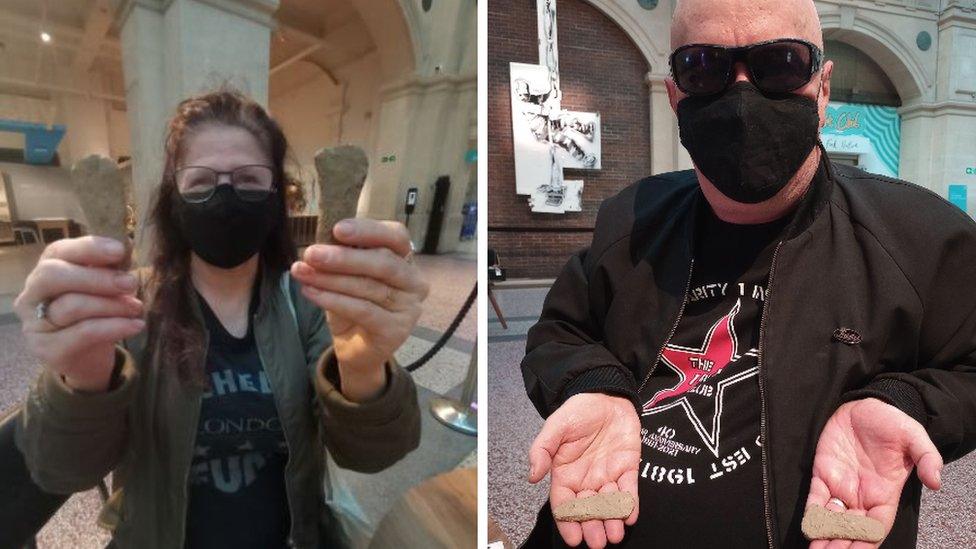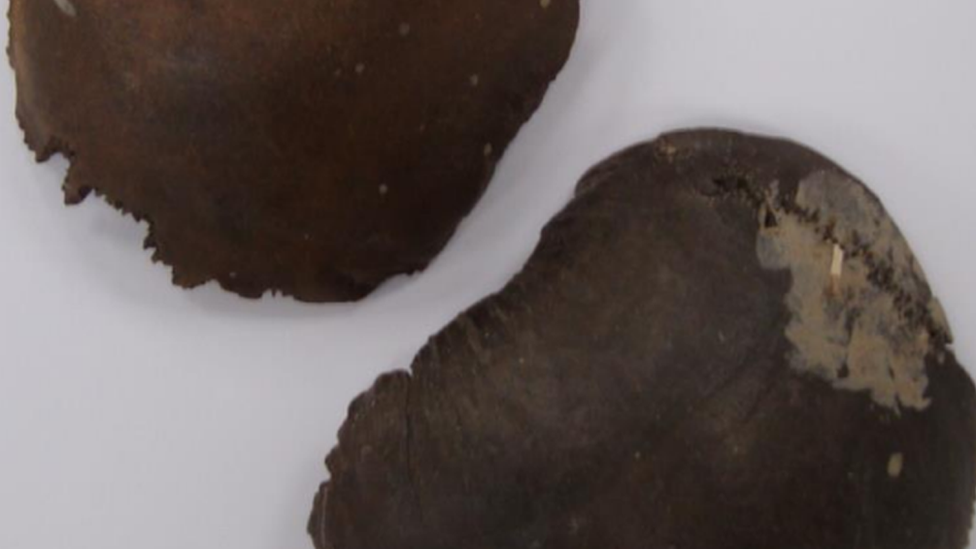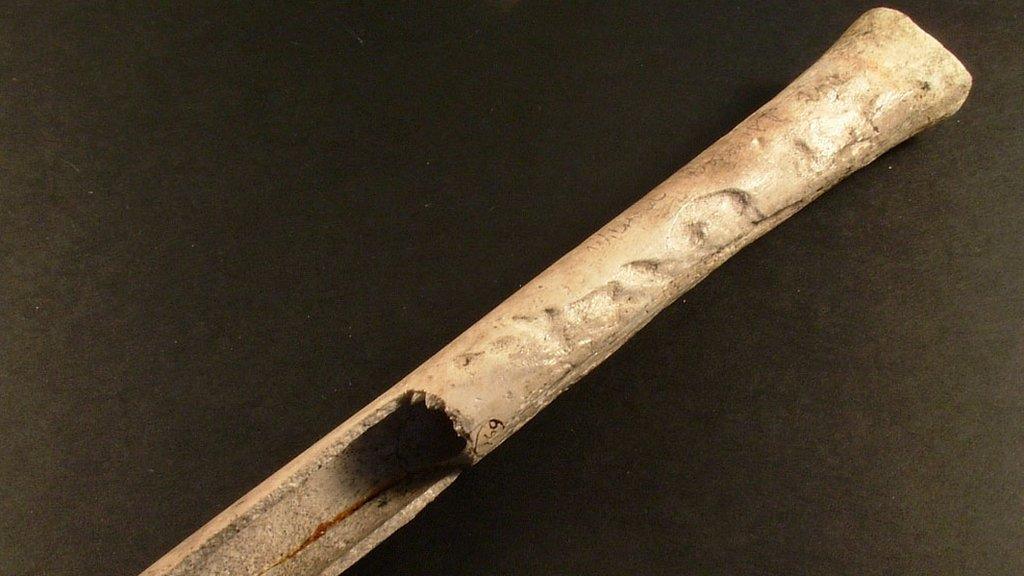Bronze Age axe heads found in Wiltshire field
- Published

The axe heads are several thousands of years old
Metal detectorists have made a "remarkable" discovery unearthing two Bronze Age axe heads on land owned by a farmer in Wiltshire.
Kay Stevenson, from Winterbourne in South Gloucestershire, said the finds could be about 4,000 years old.
"I knelt down and dug it up, then realised it looked like an axe head."
"I didn't realise the significance of what we found until we spoke to Bristol Museum, it's bonkers thinking about it," she said.

Ms Stevenson said she stumbled across the heads while out walking with friends
Ms Stevenson found the heads on 24 March with her partner Ade Rice.
Together they call themselves the Punk Metal Detectorists.
"I was absolutely hooked after trying it out once and I haven't looked back since," she said.
On this occasion she said they were wandering about with friends when "all of a sudden" they found the axe heads.
"I knelt down and dug it up. I walked on a little bit further and found another one.
"Ade immediately knew they were Bronze Age axe heads."
'Incredibly important artefacts'
The axes date back to some of the earliest metalworking in Britain, and finding two in one location was unusual, according to Kurt Adams, Finds Liaison Officer for Gloucestershire and Avon.
"Bronze Age finds are incredibly rare," he said.
"When we do see finds they tend to be later Bronze Age."
The heads are being stored in Bristol Museum and the case is with a coroner who will establish the reward value.
Mr Adams said it was "a fantastic find".
"They date to 2,200 BC to 1,800 BC, so they're around 4,000 years old.
"They were used for cutting down trees.
"They are incredibly important artefacts for this country," he added.

Follow BBC West on Facebook, external, Twitter, external and Instagram, external. Send your story ideas to: bristol@bbc.co.uk , external
Related topics
- Published25 November 2021

- Published16 September 2021

- Published1 September 2020
